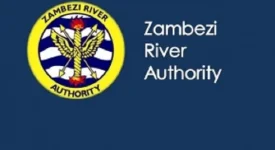Zimbabwe power plants make a lot more electricity these days thanks to extra water from the Zambezi River Authority and better output at the Hwange Power Station. This helps farmers grow winter wheat and boosts the entire economy. The Authority handles the water for both Zimbabwe and Zambia.
After water levels rose, power created at Kariba jumped from 185 megawatts to 485 megawatts. The 2024/2025 rainy season brought plenty of rainfall, much more than expected. By the end of last week, the country produced over 1,500 megawatts of electricity. Friday saw peak production hit 1,622 megawatts. Energy Minister July Moyo believes power will keep increasing during the upcoming months.
Both Zimbabwe and Zambia received 27 billion cubic meters of water for electricity this year from the river authority. Last year, they only had 16 billion cubic meters available. Minister Moyo said Unit 7 at Hwange will restart within days after routine maintenance finishes. More power arrives soon from independent producers like Chiredzi Green Fuel starting in April. These smaller companies have already added 71 megawatts to the system.
The country has struggled with electricity shortages recently because of droughts linked to El Niño and old equipment at Hwange. Two new units, numbered 7 and 8, greatly improved generation capacity. The Zimbabwe Power Company currently repairs six units at Hwange using money from the Export-Import Bank of India. This project aims to boost local electricity production, cut imported power, reduce blackouts, and increase factory output. Many areas already experience fewer power cuts.
Dr. Sydney Gata runs the Zimbabwe Electricity Supply Authority and plans for the country to produce all its needed electricity by 2028. The authority wants to launch six new power plants this year, adding 1,000 megawatts to the grid. Their target reaches 2,690 megawatts by 2029. Finance Minister Professor Mthuli Ncube based his 6 percent economic growth forecast on better farming and increased electricity supplies throughout the year.
After water levels rose, power created at Kariba jumped from 185 megawatts to 485 megawatts. The 2024/2025 rainy season brought plenty of rainfall, much more than expected. By the end of last week, the country produced over 1,500 megawatts of electricity. Friday saw peak production hit 1,622 megawatts. Energy Minister July Moyo believes power will keep increasing during the upcoming months.
Both Zimbabwe and Zambia received 27 billion cubic meters of water for electricity this year from the river authority. Last year, they only had 16 billion cubic meters available. Minister Moyo said Unit 7 at Hwange will restart within days after routine maintenance finishes. More power arrives soon from independent producers like Chiredzi Green Fuel starting in April. These smaller companies have already added 71 megawatts to the system.
The country has struggled with electricity shortages recently because of droughts linked to El Niño and old equipment at Hwange. Two new units, numbered 7 and 8, greatly improved generation capacity. The Zimbabwe Power Company currently repairs six units at Hwange using money from the Export-Import Bank of India. This project aims to boost local electricity production, cut imported power, reduce blackouts, and increase factory output. Many areas already experience fewer power cuts.
Dr. Sydney Gata runs the Zimbabwe Electricity Supply Authority and plans for the country to produce all its needed electricity by 2028. The authority wants to launch six new power plants this year, adding 1,000 megawatts to the grid. Their target reaches 2,690 megawatts by 2029. Finance Minister Professor Mthuli Ncube based his 6 percent economic growth forecast on better farming and increased electricity supplies throughout the year.












